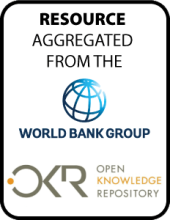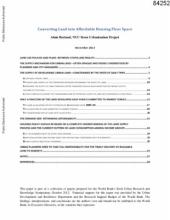Land Library Search
Through our robust search engine, you can search for any item of the over 73,000 highly curated resources in the Land Library.
If you would like to find an overview of what is possible, feel free to peruse the Search Guide.
/ library resources
Showing items 1 through 9 of 102.Ulaanbaatar's (UB) population has swollen from half a million in 2001 to approximately 1.2 million in 2011, accounting for over 40 percent of the country's population. This trend is likely to continue as economic growth is increasingly concentrated in UB.
This housing policy in developing
countries, conjectures and refutations article discusses
housing policy in developing economies. It examines recent
research findings in light of earlier arguments as to the
The rapid urbanization in many
developing countries over the past half century seems to
have been accompanied by excessively high levels of
concentration of the urban population in very large cities.
Cities emerge from the spatial concentration of people and economic activities. But spatial concentration is not enough; the economic viability of cities depends on people, ideas, and goods to move rapidly across the urban area.
Following the Great East Japan
Earthquake (GEJE), the government of Japan responded
promptly to stabilize markets and ensure a swift recovery.
Economic activity has since started picking up, in part to
What is the relationship between
employment and conflict in fragile states? Although this
question cannot be definitively answered, a large body of
research suggests that in countries emerging from conflict,
Despite extremely difficult security conditions, which deteriorated markedly after 2006, the World Bank Group has commendably established and sustained a large program of support to the country.
This paper sheds light on how to harvest
the "youth dividend" in Sub-Saharan Africa by
creating jobs in agriculture. The agriculture that attracts
the youth will have to be profitable, competitive, and




